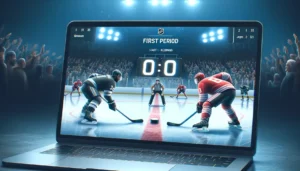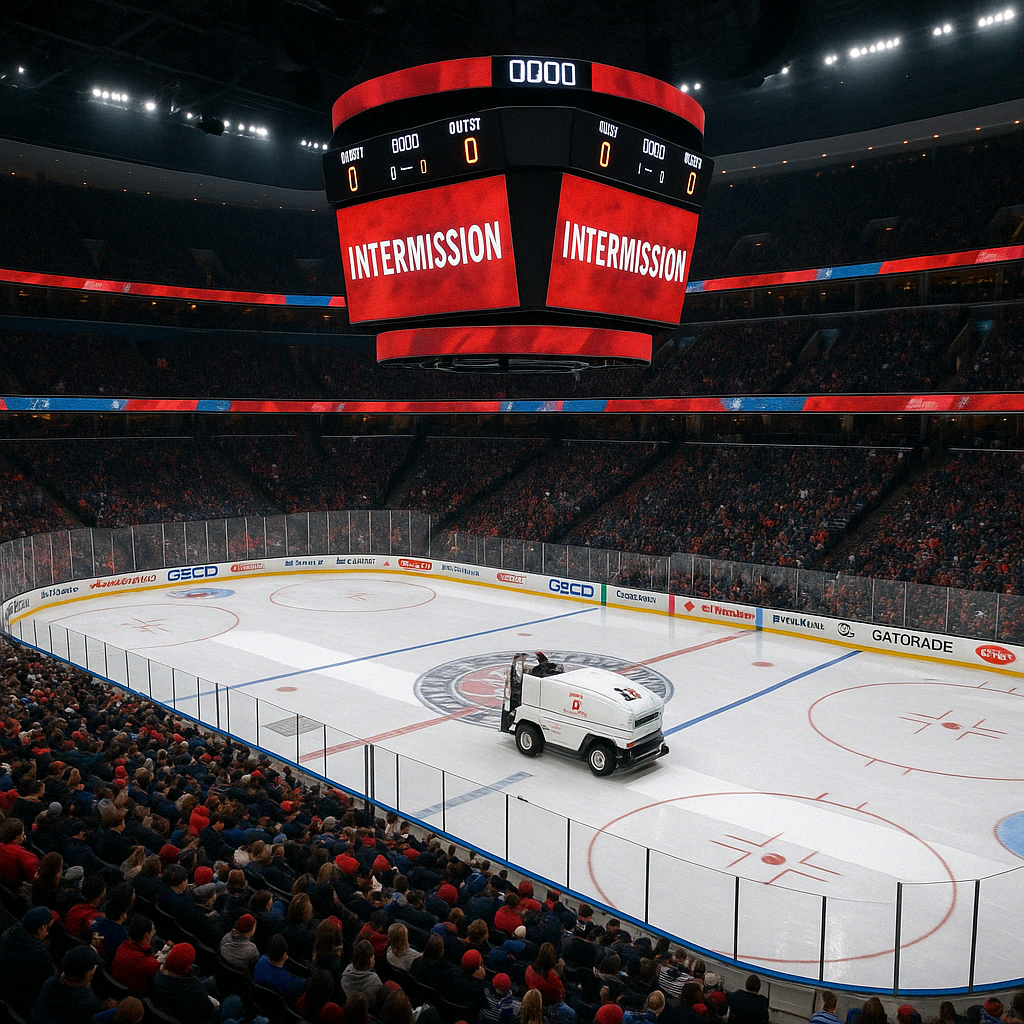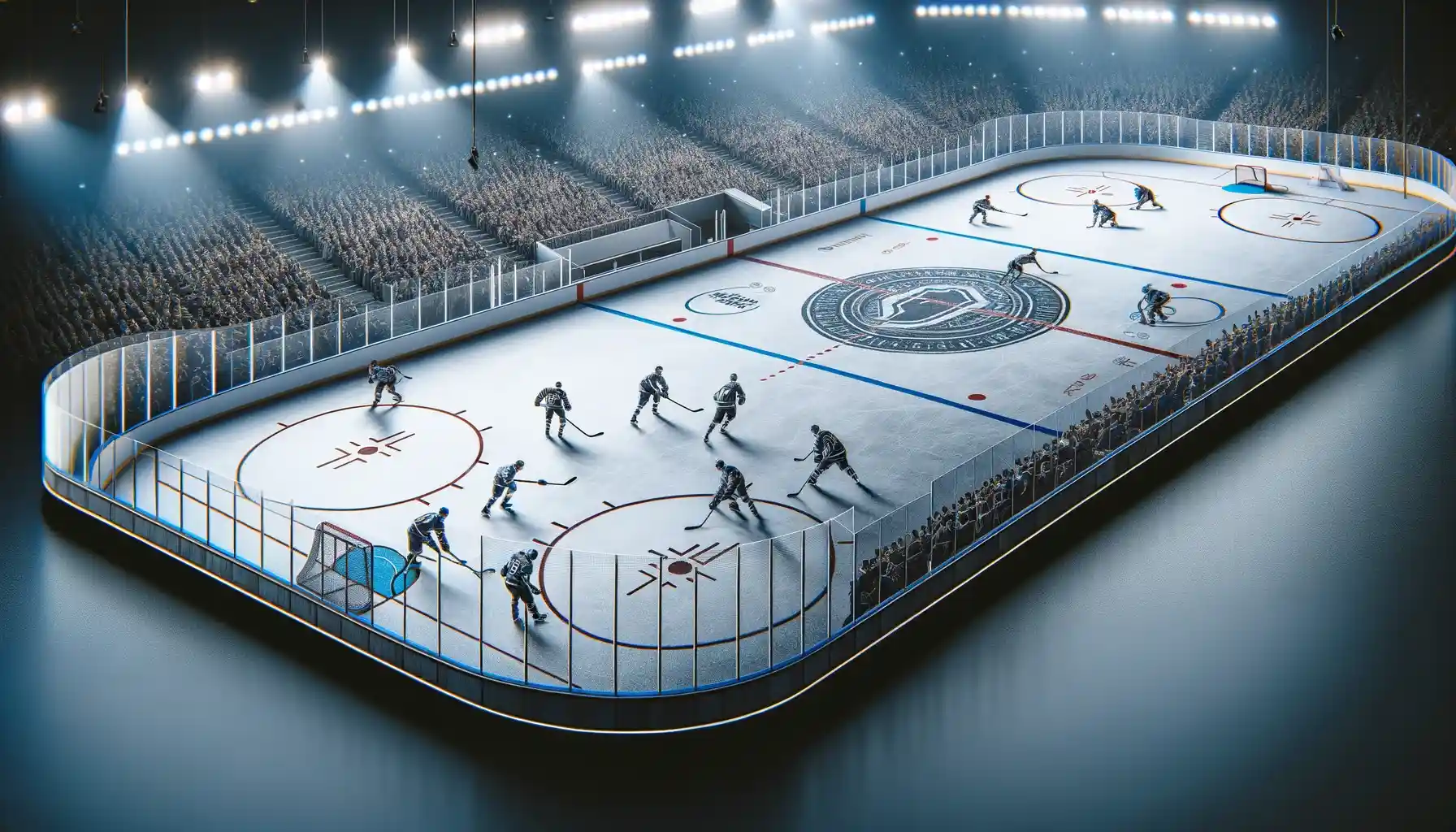Hockey games are played in three 20-minute periods, but the full game experience usually runs closer to 2.5 hours. This quick overview explains what adds to the overall time — including stoppages, intermissions, and overtime — and highlights what’s changed in 2025 across major leagues like the NHL and IIHF. It also explores what actually happens during intermissions and why those pauses matter.
TL;DR
- Most hockey games are divided into three 20-minute periods, with 15–18 minute intermissions in professional play.
- The total time of a game is about 2.5 hours, factoring in stoppages, ice resurfacing, TV breaks, and possible overtime.
- Overtime formats vary: Regular season games use 5-minute 3-on-3 overtime and shootouts; playoff games use 20-minute sudden-death periods with no shootouts.
- Shootouts are used to break ties in the regular season but remain controversial for prioritizing individual skill over team play.
- Youth and amateur leagues modify period lengths and clock rules to suit developmental needs.
- Advanced analytics like xG, Corsi, and Fenwick are now part of in-game decision-making, especially during intermissions.
What Is a Period in Hockey?
A period in hockey is a 20-minute block of stop-time play that forms the foundation of the game. During regulation, the NHL and most international leagues divide the match into three of these periods. The clock stops for penalties, goals, offside calls, icing, and other stoppages, which extends the actual viewing time well beyond the 60-minute regulation.
Each period represents more than just a time segment — it’s a reset point. Players head to the bench, coaches adapt strategies, and momentum shifts. With analytics now guiding decisions, many NHL teams use period-by-period data like Corsi, Fenwick, and expected goals (xG) to adjust line matchups and play style between periods.
How Many Periods Are There in a Hockey Game?
The vast majority of professional and competitive hockey games — including the NHL, AHL, IIHF tournaments, and NCAA Division I — are played over three periods. Each period is 20 minutes long, totaling 60 minutes of regulation play.
This structure was formalized in 1921 and has remained the global standard for ice hockey ever since. It offers a balance between physical endurance, commercial broadcasting needs, and strategic segmentation of the game.
Youth and recreational leagues often adopt the same three-period model, though each period may be shortened (e.g., 12 or 15 minutes) to suit age and conditioning levels.
Field hockey and indoor hockey typically follow a two-half or four-quarter format, but ice hockey maintains its three-period tradition across all levels.
Intermissions and What Happens Between Periods
Between each of the three periods in professional hockey, there are intermissions — short breaks that serve several purposes. In the NHL, these typically last between 15 and 18 minutes. During this time, players leave the ice to regroup and recover, while the ice is resurfaced by a Zamboni to ensure optimal playing conditions.
Beyond player rest and ice maintenance, intermissions are strategically important. Coaches review video clips and data from the previous period to adjust tactics. It’s also a moment for broadcast segments, ad slots, and in-arena entertainment for fans.
🧊 In the 2025 NHL playoffs, coaches have increasingly used intermissions to review period-specific data such as shot quality (xG) and puck possession to tweak matchups and special teams strategy.
Youth and amateur leagues may have shorter or even skipped intermissions depending on ice availability, game pacing, and scheduling constraints.
How Long Does a Full Hockey Game Actually Take?
While regulation time totals 60 minutes, a full NHL game — including two intermissions, stoppages, and potential overtime — usually takes about 2.5 hours to complete. Here’s how that breaks down:
- Regulation Play: 60 minutes (3 x 20-minute periods)
- Intermissions: 30–36 minutes total
- Stoppages (icing, penalties, reviews): Adds variable time
- TV/Media Timeouts: Roughly 3 per period in NHL games
- Overtime (if needed): 5 minutes (regular season), 20+ minutes (playoffs)
🎯 Real-world stat: NHL broadcast slots typically run for 2.5 hours, but playoff games — especially those with extended overtimes — can last well over 3 hours.
Overtime Rules and How Ties Are Handled
When a hockey game is tied at the end of regulation, overtime rules come into play — and they vary by league and stage of competition.
NHL Regular Season
If the score is tied after three periods:
- Teams play a 5-minute sudden-death overtime period at 3-on-3 strength.
- If no goal is scored, the game goes to a shootout.
- Each team selects three shooters. If tied after three rounds, it proceeds to sudden-death shootout rounds.
NHL Playoffs
- Overtime is played in full 20-minute sudden-death periods at 5-on-5 strength.
- Play continues until one team scores. There are no shootouts in the playoffs.
🔢 In the 2025 Stanley Cup Playoffs, 11 game-tying goals were scored in the final 10 minutes of regulation in the first 37 games — tying a historic high. Eight of those games went to overtime, and four ended in comeback wins.
International Tournaments (2025 NHL 4 Nations Face-Off)
- Round-robin games: 10-minute 3-on-3 overtime, followed by a shootout if needed.
- Final: Full 20-minute sudden-death periods, identical to NHL playoff rules.
Why Overtime Structure Matters
The format of overtime affects pacing, fatigue, and strategic risk. Coaches must decide whether to push for early offense or hold back defensively. In sudden-death formats, a single mistake can end the game, amplifying the pressure and intensity.
Shootouts: Format, Purpose, and Debate
When overtime fails to produce a winner during the NHL regular season, the game moves to a shootout — a one-on-one contest between a shooter and the goalie. It’s fast, dramatic, and often divisive among fans and players.
NHL Shootout Format
- Each team selects three shooters to take turns attempting to score.
- If the score remains tied after three rounds, the shootout continues in a sudden-death format.
- The team with the most goals at the end of the shootout is declared the winner.
Shootouts are not used during the playoffs or in many international elimination games, where games continue in sudden-death overtime until a winner is determined.
Why Shootouts Remain Controversial
Shootouts test individual skill, but many argue they don’t reflect team play. Critics believe outcomes should be decided by gameplay, not what feels like a skills competition. However, the NHL introduced shootouts to reduce ties and ensure every regular season game has a winner.
🧊 Shootout trivia: The longest shootout in NHL history took place in 2014 between the Panthers and Capitals — it went 20 rounds.
Period Structure in Youth, Amateur, and Women’s Hockey
While professional leagues like the NHL and IIHF follow the three-period, 20-minute standard, other levels of play adapt the format based on player development, game pacing, and logistical considerations.
Youth and Amateur Leagues
- Many youth and recreational leagues still use the three-period format, but each period may be shortened to 12 or 15 minutes.
- Intermissions are often reduced or removed to fit tight scheduling blocks at local rinks.
- Some leagues use a running clock rather than stop-time, especially for lower skill levels or informal play.
These adjustments help young players build endurance gradually while keeping games accessible and organized for parents, coaches, and facility operators.
Women’s Hockey
- Most top-level women’s competitions — including the IIHF Women’s World Championship and Olympic tournaments — follow the same three 20-minute periods as men’s hockey.
- Overtime rules are also similar, with some variations depending on the event (e.g., 10-minute OT before shootout vs. extended sudden-death periods).
- In amateur or collegiate women’s leagues, period length or overtime format may be adjusted slightly for tournament structure or travel constraints.
🔍 Period structure flexibility ensures the game remains fair, development-focused, and logistically feasible across all levels, while still honoring the traditional three-period rhythm of the sport.
Gain insight into the rules of ice hockey, crucial for each game period, and understand how they influence power play scenarios. For focused strategies on maximizing these moments, explore our Power Play Hockey guide.
Timing Mechanics: Penalty Clocks, Media Timeouts, and End-of-Period Procedures
Several behind-the-scenes mechanics influence how long a hockey game takes — and when the action stops or resumes.
Penalty Clock vs. Game Clock
Penalty time only runs while the game clock is active. For example, a two-minute minor penalty doesn’t count down during a stoppage. This keeps power plays fair and ensures the penalized team serves the full duration during live play.
🧠 Tip: If a stoppage occurs during a penalty, the remaining time is frozen until play resumes. This often gives the team on the power play a chance to reset.
Media Timeouts
In the NHL, each period includes three media timeouts. These occur:
- After the first whistle following the 14:00, 10:00, and 6:00 marks
- Only if there’s no power play or goal immediately prior
Each timeout lasts about 90 seconds and helps balance broadcast needs with player recovery and coaching adjustments.
End-of-Period Flow
When the game clock hits 0:00, the period ends immediately — regardless of puck position or possession. If the puck crosses the goal line after time expires, the goal does not count. Horns, lights, and overhead clocks are synchronized to ensure clear end-of-period enforcement.
⏱️ The final seconds of each period are closely watched, especially in close games. Teams may pull the goalie or time one last set play in the offensive zone.
FAQs About Hockey Periods
How long is each period in a professional hockey game?
Each period lasts 20 minutes of stop-time play in leagues like the NHL and IIHF.
Why does hockey have three periods instead of two halves or four quarters?
The three-period format, introduced in 1921, allows for better ice maintenance, structured pacing, and strategic resets.
What happens if a hockey game is tied after regulation?
In the regular season, it moves to 3-on-3 overtime and a shootout. In playoffs, full sudden-death overtime periods continue until someone scores.
How long do intermissions last in the NHL?
Typically between 15 and 18 minutes, depending on the arena and broadcasting schedule.
Does the penalty clock run during stoppages?
No, penalty time only counts down when the game clock is running.
Do women’s hockey games have the same structure as men’s?
Yes, in most professional and international settings. Period length and overtime rules may vary slightly at amateur levels.
Are all hockey games the same length?
Not always. Youth and amateur games often use shorter periods or running clocks, and playoff games can go much longer due to extended overtime.
This structure gives hockey its pace, its pauses, and its edge-of-your-seat moments — and understanding how it all fits together adds a layer of appreciation whether you’re watching casually or following closely.
Hone Your Hockey Skills: From Faceoffs to Goaltending
Boost your hockey performance with specialized strategies and techniques. Perfect your faceoff tactics, sharpen your passing and shooting skills, learn effective body checking, enhance goaltending skills, and improve with targeted skating drills. Our tips are tailored to help you excel in every aspect of the game.
- Mastering Hockey Faceoffs
- Strategies for Effective Hockey Passing
- Developing Precision in Hockey Shooting
- Techniques for Body Checking in Hockey
- Enhancing Skills in Ice Hockey Goaltending
- Ice Hockey Skating Drills for Better Performance
- Essential Ice Hockey Tips for Players
Leverage these resources to enhance every element of your game. From tactical plays to physical prowess, our expert guidance is designed to elevate your hockey skills and on-ice intelligence.




